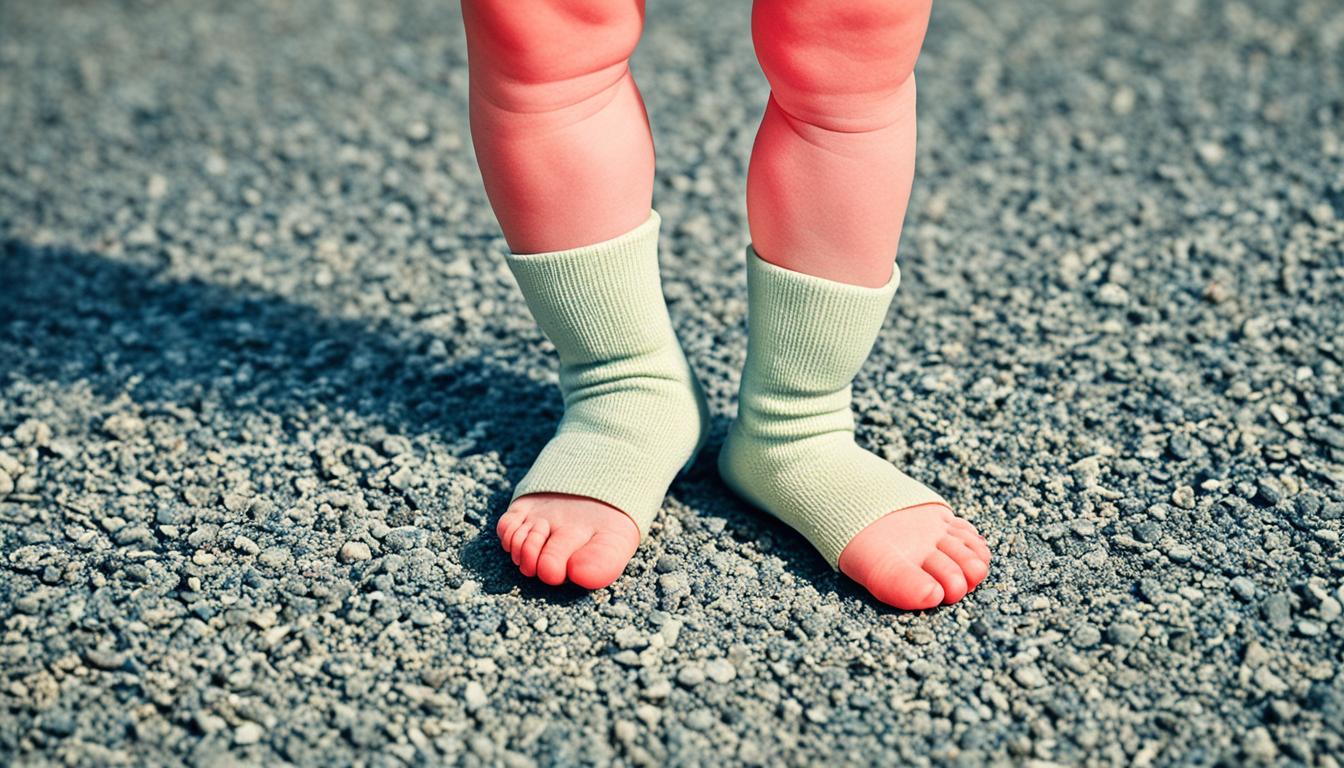Clubfoot is a birth condition where the foot is fixed in a specific position. The foot is pointed downward and twisted inwards and towards the bottom. It usually happens with other leg issues. Certain genes, like PITX1, are linked to this defect. About 1 in every 1,000 babies born has clubfoot. More boys get it than girls, with a ratio of 2:1. Even though we’re not sure what causes clubfoot, we know that genes and some environmental factors play a role. For instance, if the mother smokes or has diabetes, the baby might be at higher risk.
Doctors can tell a baby has clubfoot by looking at their foot right after they’re born. Sometimes, they will also take X-rays to see how bad it is. The Ponseti method is the most common way to treat clubfoot. It uses casting and exercises to slowly fix the foot’s position. But, in serious cases, the baby might need surgery or botulinum toxin injections. There’s ongoing research on using stem cell therapy to treat clubfoot.
Key Takeaways:
- Clubfoot is a congenital limb deformity characterized by the fixation of the foot in abnormal positions.
- Genetic and environmental factors may contribute to the development of clubfoot.
- Clubfoot can be diagnosed at birth based on the appearance of the foot.
- The Ponseti method is the primary treatment for clubfoot, combining casting and physiotherapy.
- Surgery or botulinum toxin injections may be necessary in severe cases.
Symptoms and Diagnosis of Clubfoot
Clubfoot is a limb deformity present at birth. It makes the foot stay in a fixed position. The signs of clubfoot differ by the child’s age and how serious the problem is.
At first, you might notice the top of the foot twisted downward and inward. This makes the arch higher and the heel turn in. In bad cases, the foot might look like it’s upside down. The calf muscle on the affected leg can be smaller. And in some cases, one foot might be different from the other.
Doctors can find clubfoot soon after a baby is born. They just need to look at the foot. Sometimes, they take X-rays to see how bad things are and check the bones. But, they can also see if a baby will have clubfoot before birth, with an ultrasound.
Clubfoot Diagnosis
| Criteria | Description |
|---|---|
| Physical Appearance | Distinctive position and shape of the foot indicating clubfoot |
| X-rays | Used to assess the severity of the deformity and identify skeletal abnormalities |
| Ultrasound | Can detect clubfoot before birth |
Treatment Options for Clubfoot
The main way to treat clubfoot is with the Ponseti method. It uses gentle moving and putting on casts. During several sessions, the foot is slowly fixed as new casts are added.
Once the foot is in a better position, a special brace like the Denis Browne Bar is used. Sometimes, a child might need surgery if the foot is very curved. Surgery helps with tendons, ligaments, and the foot and ankle’s position.
Sometimes, the Ponseti treatment is helped by botulinum toxin injections to ease stiff muscles. Stem cell therapy is also being studied as a new way to treat clubfoot. But, we need more research to know if it’s a good option.

